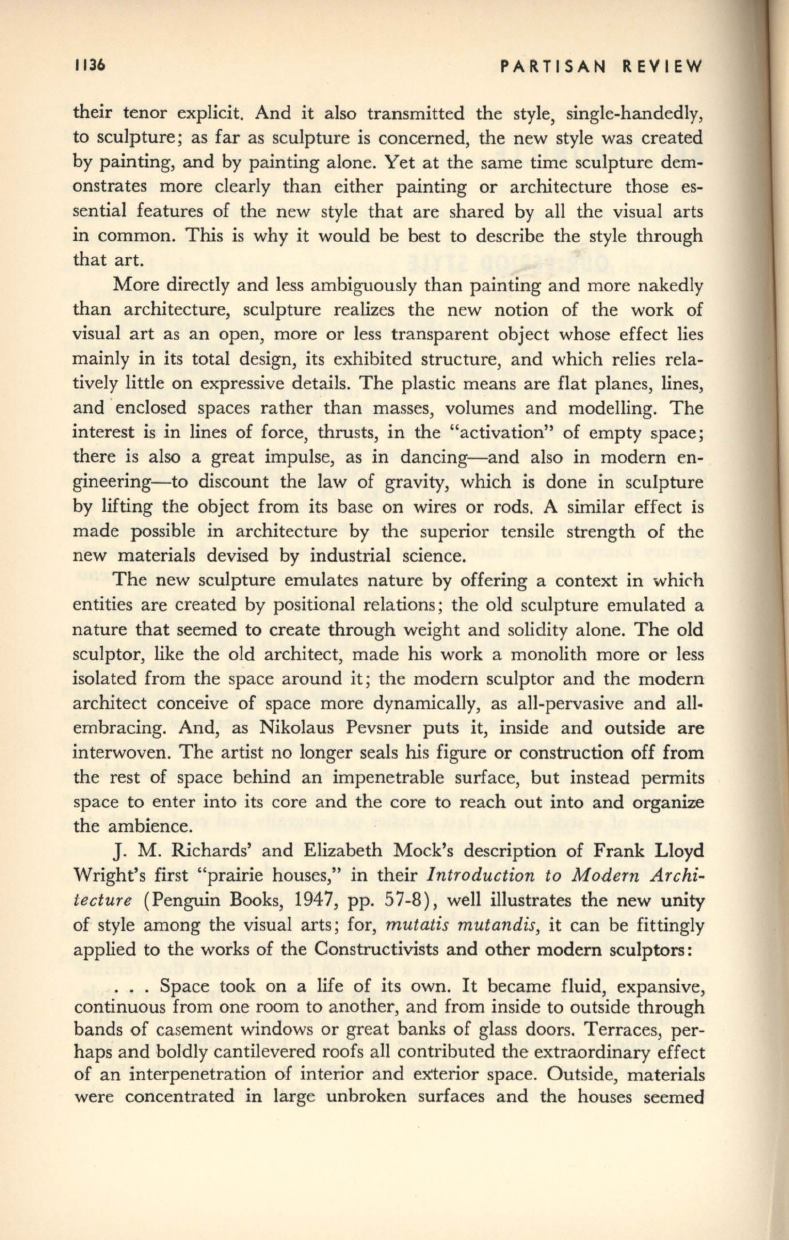
1136
PARTISAN REVIEW
their tenor explicit. And it also transmitted the style, single-handedly,
to sculpture; as far as sculpture is concerned, the new style was created
by painting, and by painting alone. Yet at the same time sculpture dem–
onstrates more clearly than either painting or architecture those es–
sential features of the new style that are shared by all the visual arts
in common. This is why it would be best to describe the style through
that art.
More directly and less ambiguously than painting and more nakedly
than architecture, sculpture realizes the new notion of the work of
visual art as an open, more or less transparent object whose effect lies
mainly in its total design, its exhibited structure, and which relies rela–
tively little on expressive details. The plastic means are flat planes, lines,
and enclosed spaces rather than masses, volumes and modelling. The
interest is in lines of force, thrusts, in the "activation" of empty space;
there is also a great impulse, as in dancing-and also in modern en–
gineering-to discount the law of gravity, which is done in sculpture
by lifting the object from its base on wires or rods. A similar effect is
made possible in architecture by the superior tensile strength of the
new materials devised by industrial science.
The new sculpture emulates nature by offering a context in which
entities are created by positional rela tions ; the old sculpture emulated a
nature that seemed to create through weight and solidity alone. The old
sculptor, like the old architect, made his work a monolith more or less
isolated from the space around it ; the modern sculptor and the modern
architect conceive of space more dynamically, as all-pervasive and all·
embracing. And, as Nikolaus Pevsner puts it, inside and outside are
interwoven. The artist no longer seals his figure or construction off from
the rest of space behind an impenetrable surface, but instead permits
space to enter into its core and the core to reach out into and organize
the ambience.
J.
M. Richards' and Elizabeth Mock's description of Frank Lloyd
Wright's first "prairie houses," in their
Introduction to Modern Archi–
tecture
(Penguin Books, 1947, pp. 57-8), well illustrates the new unity
of style among the visual arts; for,
mutatis mutandis,
it can be fittingly
applied to the works of the Constructivists and other modern sculptors:
. . . Space took on a life of its own.
It
became fluid, expansive,
continuous from one room to another, and from inside to outside through
bands of casement windows or great banks of glass doors. Terraces, per–
haps and boldly cantilevered roofs all contributed the extraordinary effect
of an interpenetration of interior and exterior space. Outside, materials
were concentrated in large unbroken surfaces and the houses seemed


